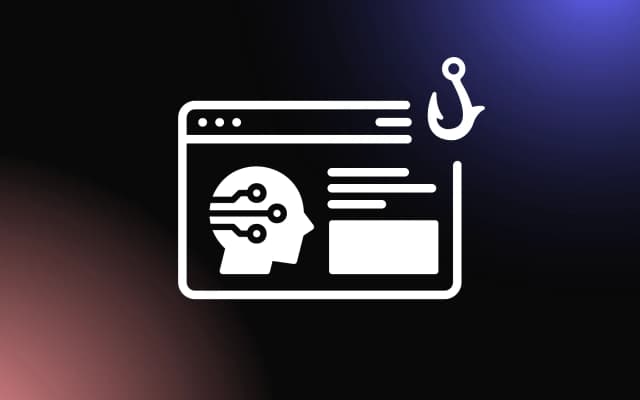
Navigating the integration of Customer Relationship Management (CRM) systems into a business can be a daunting task, yet it's a crucial step towards streamlining customer interactions and enhancing overall efficiency.
This comprehensive guide is designed to demystify the process, offering a clear, step-by-step approach to integrating CRM into your business operations. Whether you're a small business owner, a manager in a larger corporation, or an IT professional tasked with the implementation, this guide will walk you through the essential phases of CRM integration.
From selecting the right system that aligns with your business goals to training your team for optimal usage, we cover all the critical aspects to ensure a smooth and successful integration. Let's embark on this journey to transform your customer relationship management and propel your business to new heights of success.
Assessing Your CRM Needs
Identifying Business Requirements
To effectively assess your Customer Relationship Management (CRM) needs, it's crucial to first identify the specific requirements of your business.
- Business Size and Structure: Consider the size of your business and its structure. A small business might have different CRM needs compared to a large enterprise with multiple departments.
- Customer Interaction Volume: Analyze the volume of customer interactions. Businesses with high customer interaction rates require robust CRM systems to manage these effectively.
- Sales and Marketing Goals: Identify your sales and marketing objectives. A CRM should align with these goals, whether it's increasing sales, improving customer retention, or streamlining marketing campaigns.
- Customer Data Management: Determine the type and amount of customer data you need to manage. This includes contact information, interaction history, purchase records, and preferences.
Evaluating Current Customer Management Processes
Understanding your current customer management processes is key to identifying areas where a CRM can offer improvements.
- Process Mapping: Map out your current customer interaction processes. Identify any inefficiencies, bottlenecks, or gaps where customer data might be getting lost or underutilized.
- Feedback from Teams: Gather feedback from teams that interact with customers, such as sales, marketing, and customer service. Their insights can highlight practical needs and challenges.
- Integration Needs: Consider how a CRM system would integrate with your existing tools and software. Seamless integration is crucial for efficiency and user adoption.
- Scalability: Assess whether your current processes are scalable. As your business grows, your CRM system should be able to accommodate increased demands without a drop in performance.
- Compliance and Security: Evaluate your current compliance with data protection regulations. A CRM should help in maintaining or improving data security and regulatory compliance.
Choosing the Right CRM Platform
Comparing Different CRM Solutions
Selecting the most suitable Customer Relationship Management (CRM) platform requires a careful comparison of the various solutions available in the market.
- Feature Set: Evaluate the features offered by different CRM platforms. Look for essential functionalities like contact management, interaction tracking, lead management, email integration, and reporting capabilities.
- Customization: Assess the customization options each CRM offers. The ability to tailor the platform to your specific business processes and workflows is crucial.
- User Experience: Consider the user interface and ease of use. A user-friendly CRM increases adoption rates and reduces the learning curve for your team.
- Integration Capabilities: Check how well the CRM integrates with other tools and systems you currently use, such as email clients, social media platforms, and accounting software.
Considerations for Cost, Scalability, and Features
When choosing a CRM platform, it's important to balance cost, scalability, and features to find the best fit for your business.
- Cost: Determine your budget for a CRM solution. Consider not only the upfront costs but also any ongoing expenses, such as subscription fees, maintenance costs, and additional charges for premium features or extra users.
- Scalability: Choose a CRM that can grow with your business. It should be able to handle an increasing number of customers and data, as well as adapt to evolving business needs.
- Feature Relevance: Prioritize the features that are most relevant to your business needs. Avoid paying for complex functionalities that you are unlikely to use.
- Vendor Support and Training: Evaluate the level of support and training provided by the CRM vendor. Good customer support, training resources, and a responsive service team can be crucial, especially in the initial stages of implementation.
- Security and Compliance: Ensure that the CRM platform complies with data protection regulations relevant to your industry and region. Data security features are a must-have to protect sensitive customer information.
- Trial Periods and Demos: Take advantage of trial periods or request demos to get a hands-on feel for how the CRM works and how it fits into your business operations.
Preparing for CRM Integration

Setting Up a Project Plan
A well-structured project plan is crucial for a smooth CRM integration process. It helps in managing the transition effectively and ensures all necessary steps are taken.
- Define Objectives: Clearly outline what you aim to achieve with the CRM integration. This could include improved customer data management, enhanced sales processes, or better customer service.
- Timeline and Milestones: Establish a realistic timeline for the integration process. Set key milestones to track progress and ensure the project stays on schedule.
- Resource Allocation: Determine the resources required for the integration, including budget, personnel, and technology. Ensure that these resources are adequately allocated.
- Risk Assessment: Conduct a risk assessment to identify potential challenges and develop contingency plans. This could include data migration issues, user adoption hurdles, or technical glitches.
Involving Key Stakeholders and Teams
Successful CRM integration requires the involvement and support of key stakeholders and teams within the organization.
- Stakeholder Engagement: Identify and engage stakeholders from the outset. This includes management, IT staff, sales and marketing teams, and customer service representatives.
- Cross-Departmental Collaboration: Encourage collaboration between departments. Each team will have unique insights and requirements that should be considered in the CRM integration.
- Training and Support: Plan for comprehensive training and support for all users. Adequate training ensures that staff are comfortable and proficient with the new system.
- Communication: Maintain open and ongoing communication throughout the integration process. Regular updates and feedback sessions can help address concerns and adjust plans as needed.
- User Involvement in Testing: Involve end-users in the testing phase. Their feedback can be invaluable in identifying issues and ensuring the system meets user needs.
- Change Management: Implement change management strategies to help staff adapt to the new system. This includes addressing resistance to change and ensuring a smooth transition.
Implementing the CRM System
Data Migration and System Configuration
The implementation of a CRM system is a critical phase that involves transferring existing data and configuring the new system to align with business operations.
- Data Migration Plan: Develop a comprehensive plan for migrating data to the new CRM system. This includes identifying which data to transfer, cleaning and organizing the data, and ensuring its integrity during the migration process.
- System Configuration: Configure the CRM to match your business processes. This involves setting up user accounts, defining sales pipelines, customizing dashboards, and establishing workflows that mirror your operational needs.
- Integration with Other Systems: Ensure the CRM integrates seamlessly with other business systems, such as email platforms, accounting software, and marketing tools. This integration is crucial for a unified and efficient workflow.
- Testing: Conduct thorough testing of the CRM system before full deployment. This should include testing data integrity post-migration, workflow processes, and system integrations.
Customization to Fit Business Needs
A CRM system often requires customization to fully meet the specific needs of a business.
- Tailoring Features: Customize features and functionalities based on your business requirements. This might involve modifying contact management features, reporting tools, or customer interaction tracking.
- User Roles and Permissions: Set up user roles and permissions to reflect the structure and hierarchy of your organization. This ensures that employees have access to the appropriate level of information and functionalities.
- Custom Fields and Modules: Add custom fields and modules that are relevant to your business. For instance, if you have unique customer data points or specific sales stages, these should be reflected in the CRM.
- Feedback Loop: Establish a feedback loop with users during the early stages of implementation. User feedback is invaluable for making necessary adjustments and ensuring the system meets user expectations.
- Ongoing Adjustments: Be prepared to make ongoing adjustments and refinements. As your business evolves, your CRM system should adapt to changing needs and processes.
Conclusion
Successfully integrating a CRM system into your business can revolutionize the way you manage customer relationships and data. As we've explored, the journey involves careful planning, selecting the right system, customizing it to fit your business needs, and ensuring your team is well-trained to use it.
The key to a successful CRM integration lies in understanding that it's not just a technological change but a strategic business move. By effectively leveraging the capabilities of your CRM system, you can gain deeper insights into customer behavior, improve operational efficiency, and ultimately enhance customer satisfaction and loyalty. Remember, a CRM system is a powerful tool, but its true value is realized only when it's fully integrated into the fabric of your business operations and culture.



